Drying flowers is a wonderful way to preserve your blooms throughout the growing season. Hanging to air dry is one way to turn these blooms into everlastings. Learn how to dry flowers upside down, to enjoy beautiful dried flowers throughout the year.
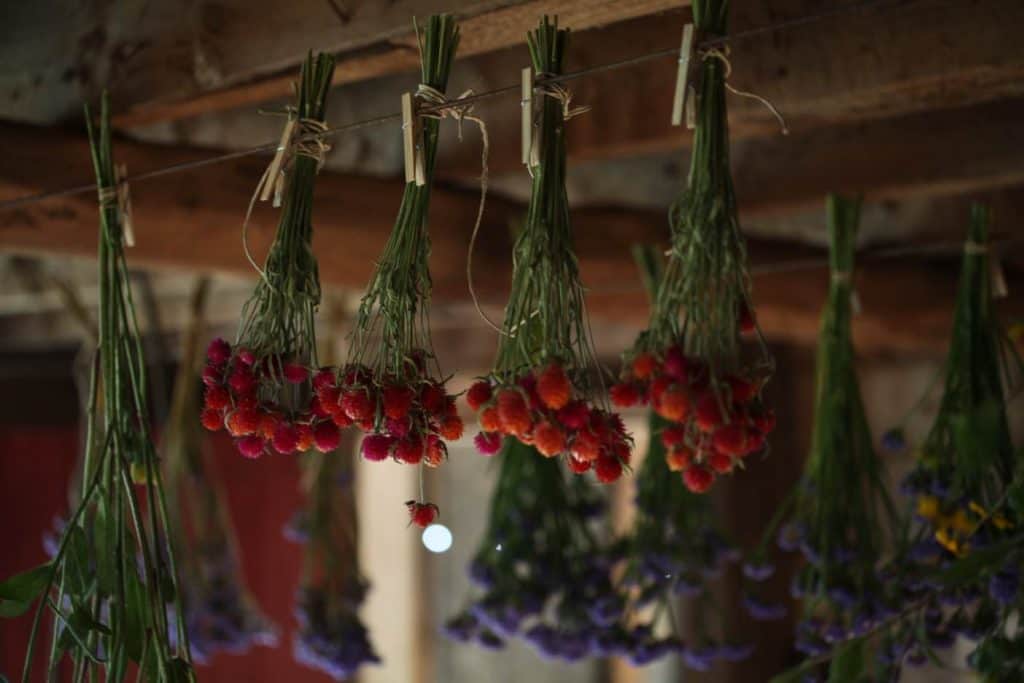
Drying Flowers Upside Down
Drying flowers upside down is one of the easiest ways to dry and preserve your blooms.
Why Do You Dry Flowers Upside Down?
Suspending flowers upside down helps to maintain their form while they are going through the drying process.
It also allows the air to circulate around the petals, stems and leaves, preventing mould and mildew.
Consider the flowers that you would like to dry, as not all flowers should be dried by hanging upside down, although many certainly can be.
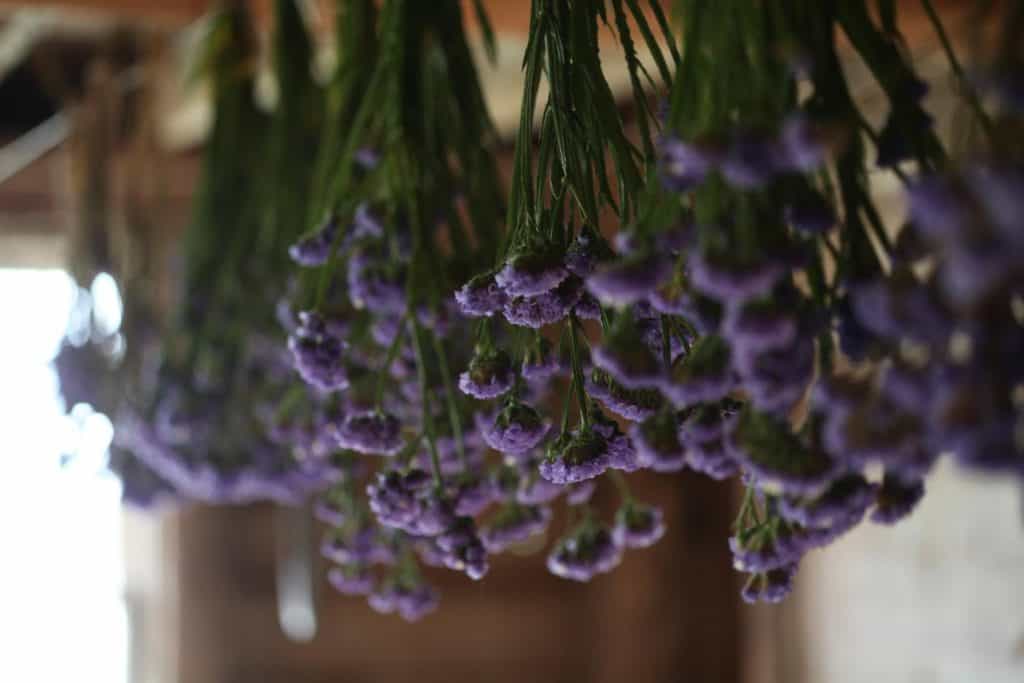
Best Flowers To Dry Upside Down
The best flowers to dry upside down are those that are smaller, lighter or more compact.
Hanging these flowers will not create a change in how they look compared to when they were growing upright, other than the fact that they are now dried in appearance rather than fresh.
Some flowers will not look as appealing if they are hung upside down. These include heavy and trailing type blooms, and others, like zinnias.
If zinnias are hung upside down their petals may curl upwards. They are best dried upright or in silica gel.
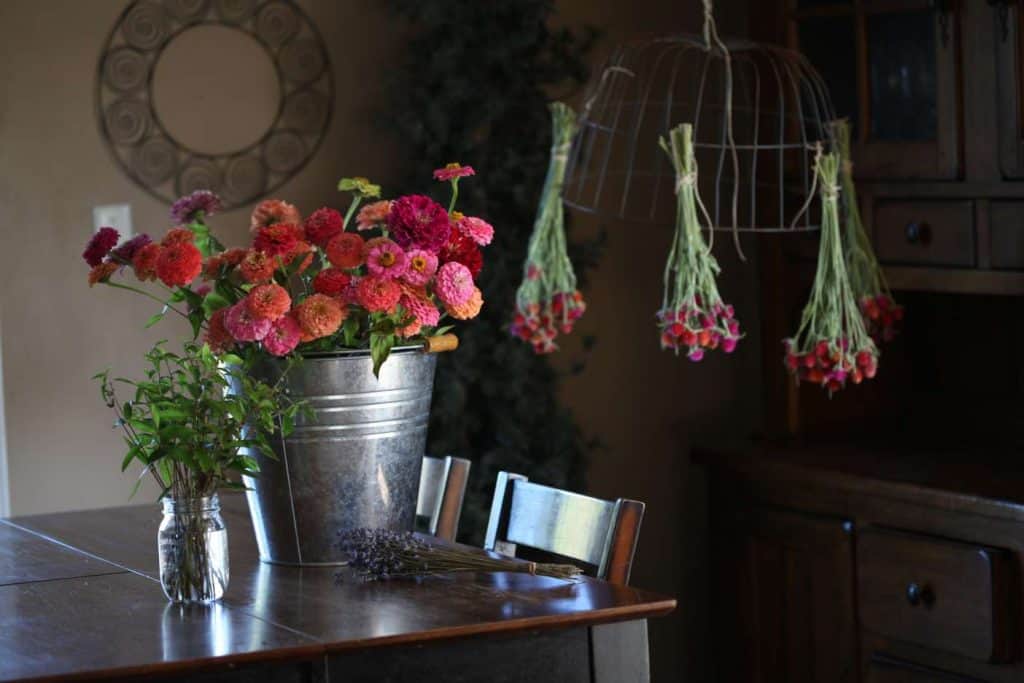
Best Stage At Which To Harvest For Hanging To Dry
It's important to know the best stage to harvest the blooms for each flower type that you intend to harvest, as not all blooms have the same harvesting stage for drying.
Harvest most flowers when they are in peak bloom, usually before they start to produce pollen or seed.
Of course every flower is different, and it would be recommended to explore each type of flower you are intending to harvest for best stage to pick for drying.
Immature blooms tend to be tighter and more difficult to dry. They can also have delicate necks which are more at risk for breaking.
Some blooms are best for drying when only half of their blooms have opened. Examples of these types of flowers are Delphinium, and Larkspur (although I have dried Larkspur with fully opened petals as well).
Most blooms are best for hanging to dry when the flowers are fully opened.
You can also experiment yourself to see the outcome of different stages of bloom. You may be pleasantly surprised at the outcome.
Preparing And Processing Flowers To Hang For Drying
The best blooms for drying are those that are freshly harvested.
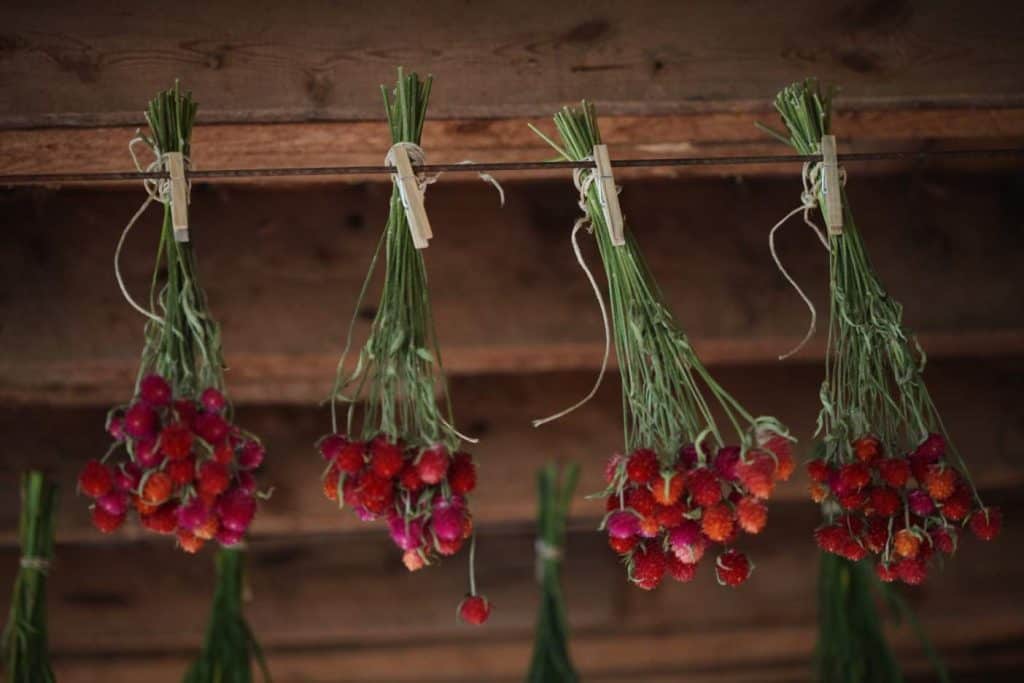
- Harvest the flowers when they are completely dry, after the morning dew has had a chance to evaporate off the blooms.
- An evening harvest is also a good time to pick the blooms for drying.
- To prepare your flowers for drying upside down, remove most of the leaves from the stem, leaving a few at the top.
- I leave some of the leaves at the top of most stems for a nicer aesthetic, and less bare look.
- The flowers are bunched together in small bunches of approximately ten to thirty stems, depending on the flower.
- Then an elastic band is placed at the bottom of the bunch, holding the stems together. This will help to keep all of the flowers in place as they dry, and can help to prevent some from slipping out onto the floor.
- These bunches are then suspended from drying racks, lines or any other setup that will allow for adequate drying.
The Environment For Drying
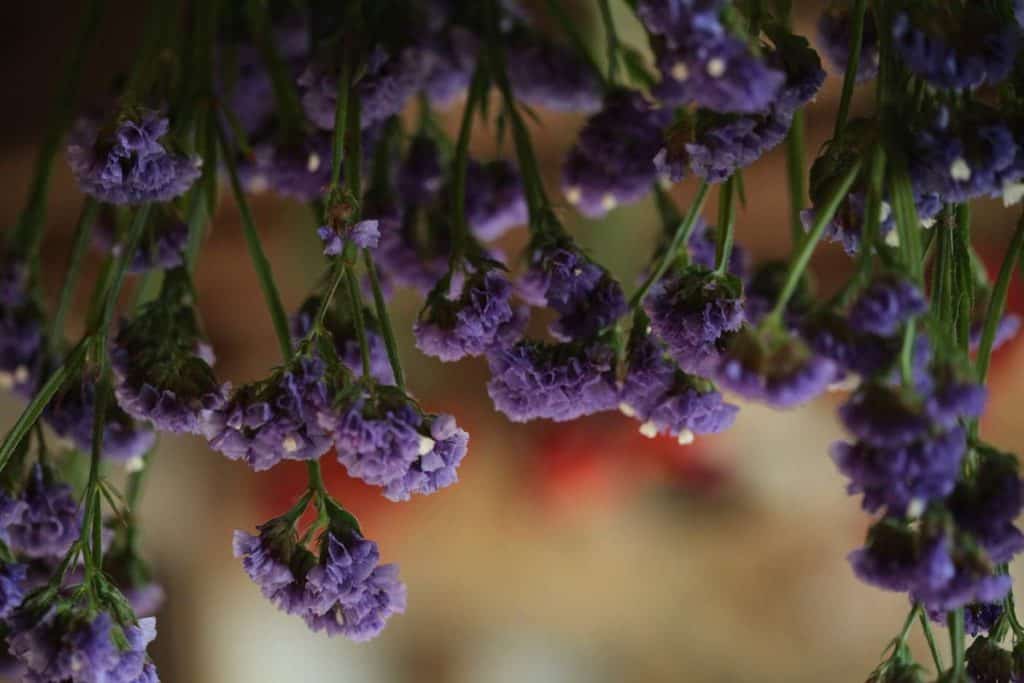
Here are important environmental considerations for drying flowers by hanging to dry:
1. Air Temperature
- Ideally the space for drying flowers will be dark and warm, with good air flow.
- Too much heat however is not good either, and may cause the dried flowers to become brittle and more vulnerable to breakage.
- The best temperature for drying is room temperature.
2. Light
- A darker environment will help to preserve the colour of the flowers. This however is dependent on the type of flowers that are being dried.
- Some flowers preserve their colour much better than others.
- Try not to put your setup near a window or in a bright sunlit room.
3. Air Flow
- Use of a fan in the room is helpful to create good circulation.
- Good airflow is important to help reduce dampness on the drying flowers, which might contribute to mould and mildew.
4. Humidity
- Humidity can also contribute to moulding of the drying flowers. A low humidity environment is the best.
The Set Up For Drying Flowers By Hanging Upside Down
There are a number of different ways to dry flowers by hanging them upside down.
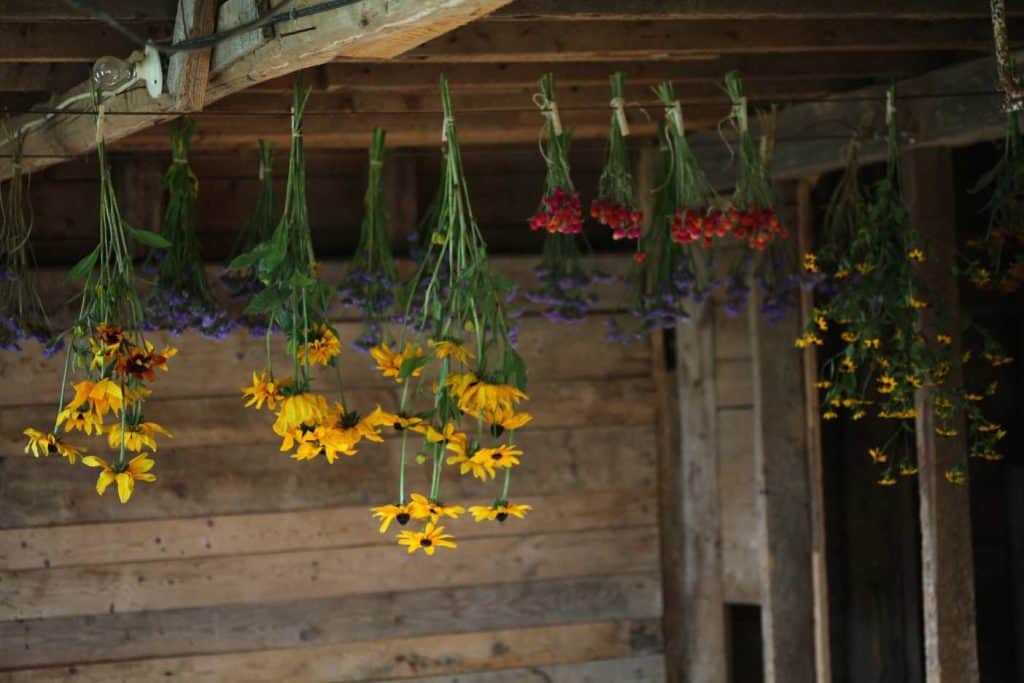
If drying in smaller amounts, you can hang suspended from a frame.
If drying in larger amounts, it may be best to set up some lines or wires in a space that can accommodate hanging flowers. This can create a drying space for your blooms.
Different Methods For Hanging Flowers To Dry
Here are several different methods for hanging flowers to dry.
1. Dry Flowers By Hanging From A Frame
- We used a large wire rack inverted and suspended on which to tie some bouquets for drying.
- You can also build a simple frame out of wood, cover with chicken wire, and safely suspend from a ceiling.
An example of this type of framed hanging station can be seen here. This suspended drying rack/ hanging station was created by Her 86m2 using a wooden frame, chicken wire, and hooks, onto which she suspended bouquets of flowers.
The dried flowers can then be hung from the chicken wire. Ensure that there is good spacing between the drying bouquets so that they are not touching.
Good spacing will allow for good air circulation between the bouquets to help them to dry out well.
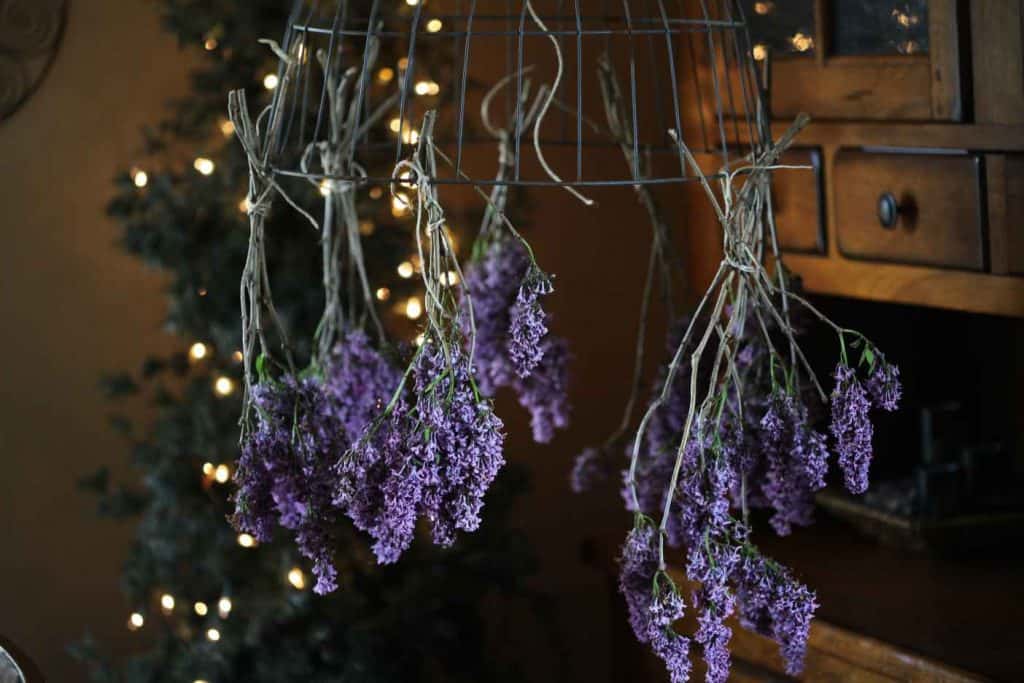
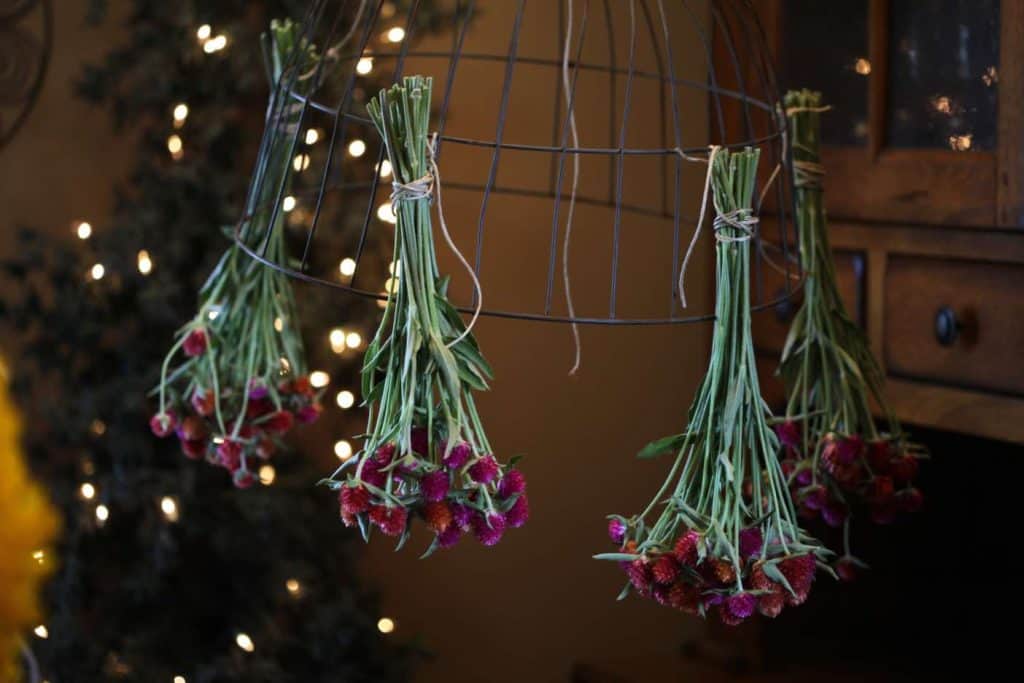
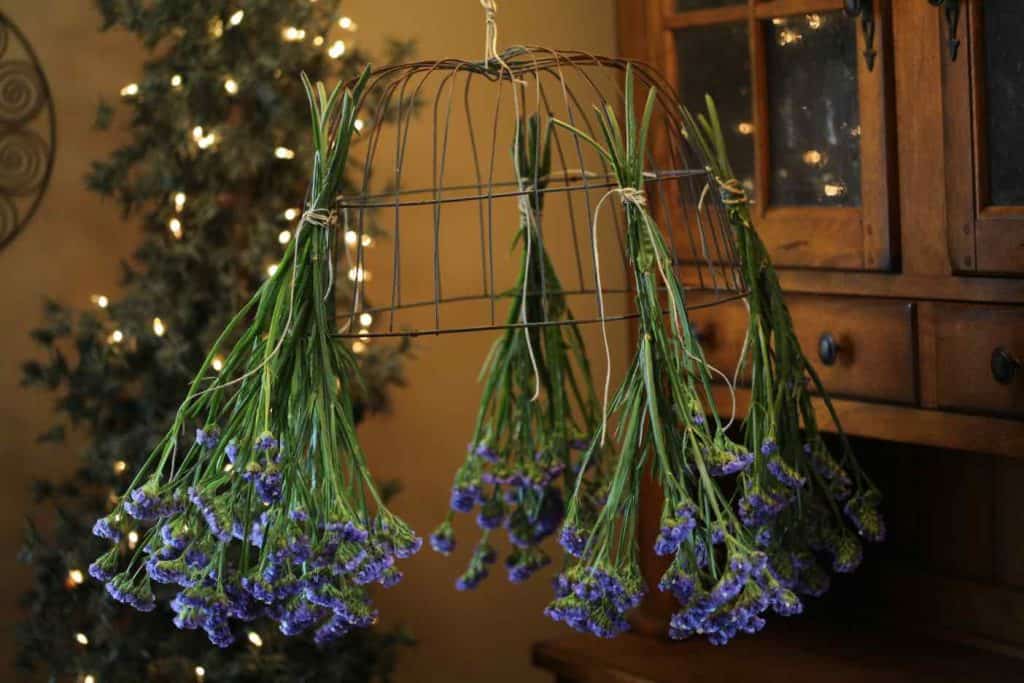
2. Dry Flowers By Hanging From A Suspended Line
Setting up a drying line is probably one of the easiest ways to dry a large number of flowers.
We did this in one of the barns, in a warm darkened space.
We set up several drying lines which span approximately fifteen feet each.
There is room for more lines if needed.
Tools And Materials:
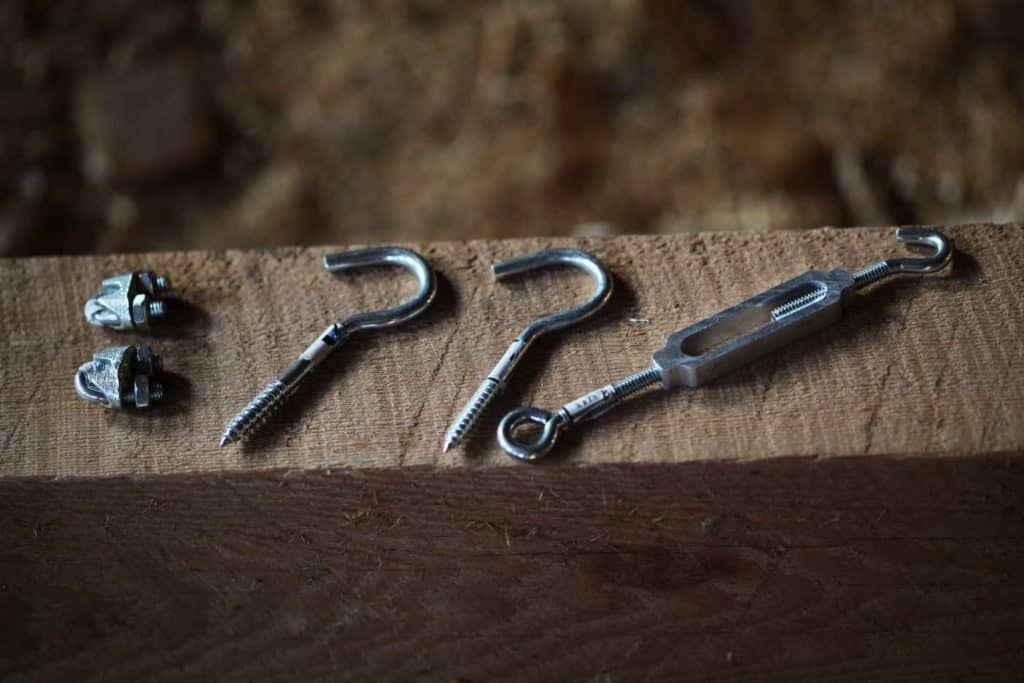
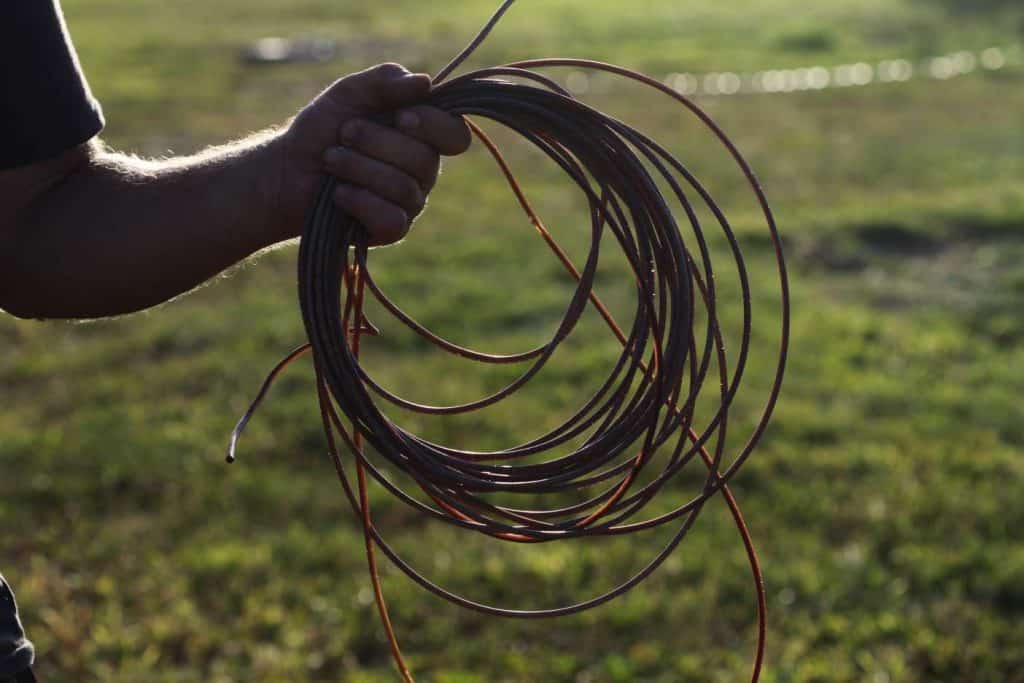
- Wire or line ( we used an old vintage clothes line), length determined by the space for setup
- 1 small turnbuckle per line
- 2 cable clamps per line
- 2 screw hooks per line
- elastics
- clothespins
Directions For Setting Up A Drying Line:
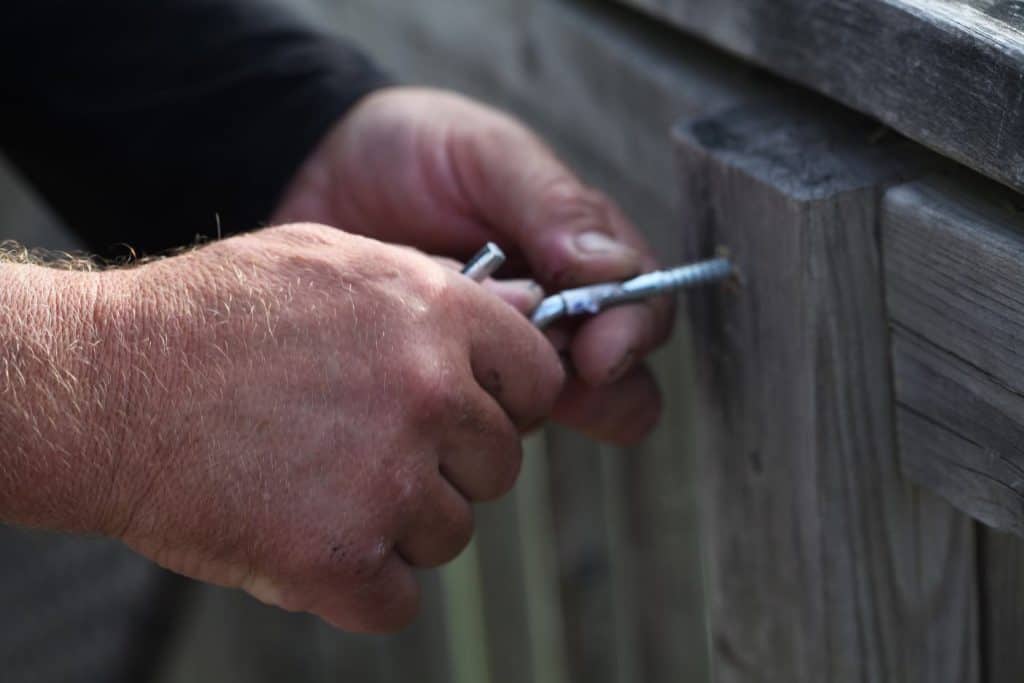
- Screw in the two screw hooks on opposite walls, at the height of the line you intend to suspend.
- Fold one end of your line making a loop, and slide on a cable clamp.
- Tighten the clamp securely on the line.
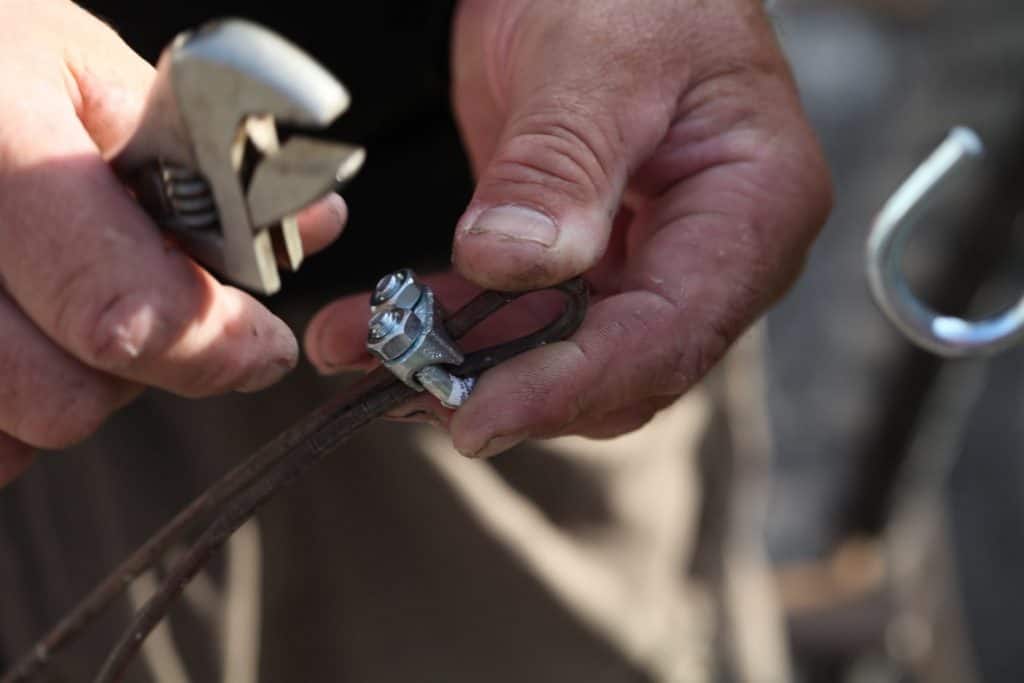
- At the other end of the line do the same thing, but first slip the line through the turnbuckle before attaching the cable clamp to the line.
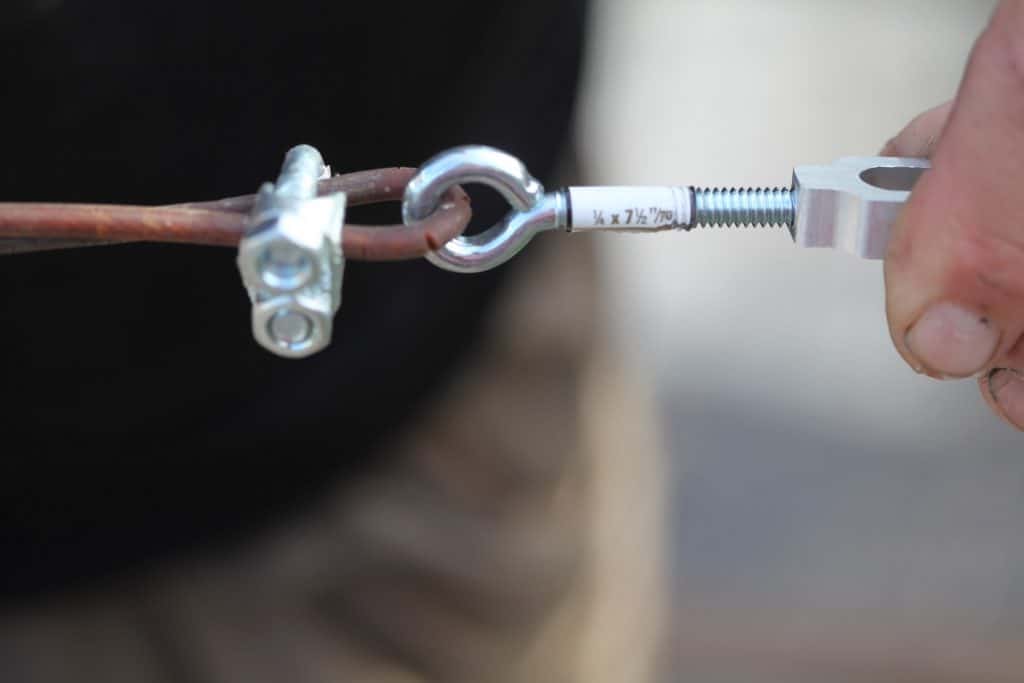
- This turnbuckle allows you to adjust the tension of the line, allowing to tighten as necessary.
- Hook one looped end of the drying line to a screw hook on the wall, and then do the same to the other side of the room.
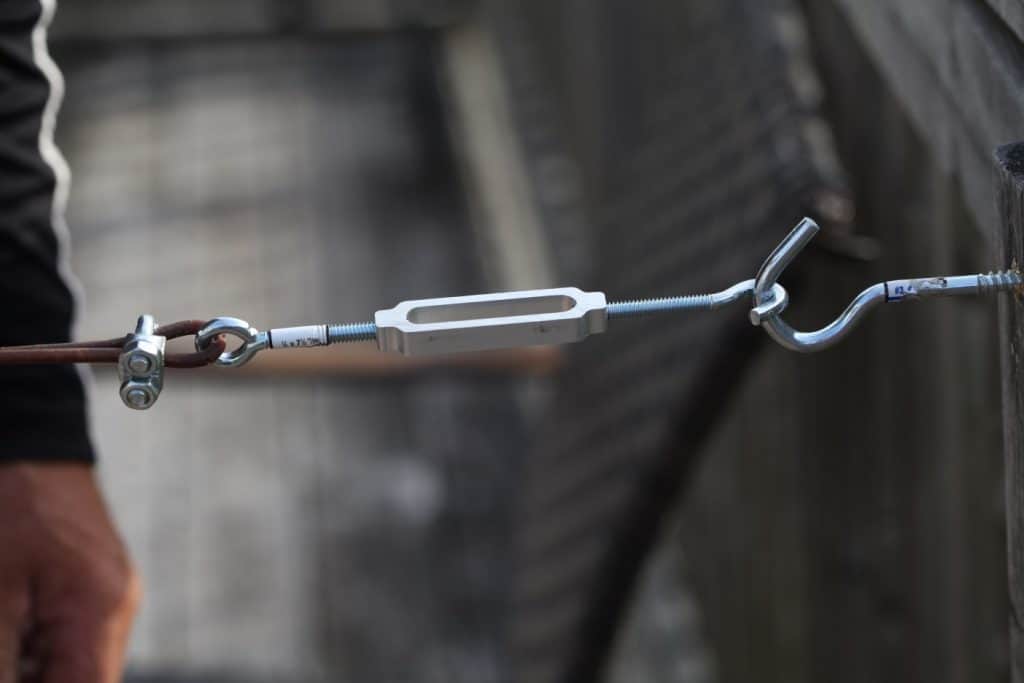
- Tighten the line with the turnbuckle to make taught to support your hanging flowers.
Attaching The Flowers To The Line
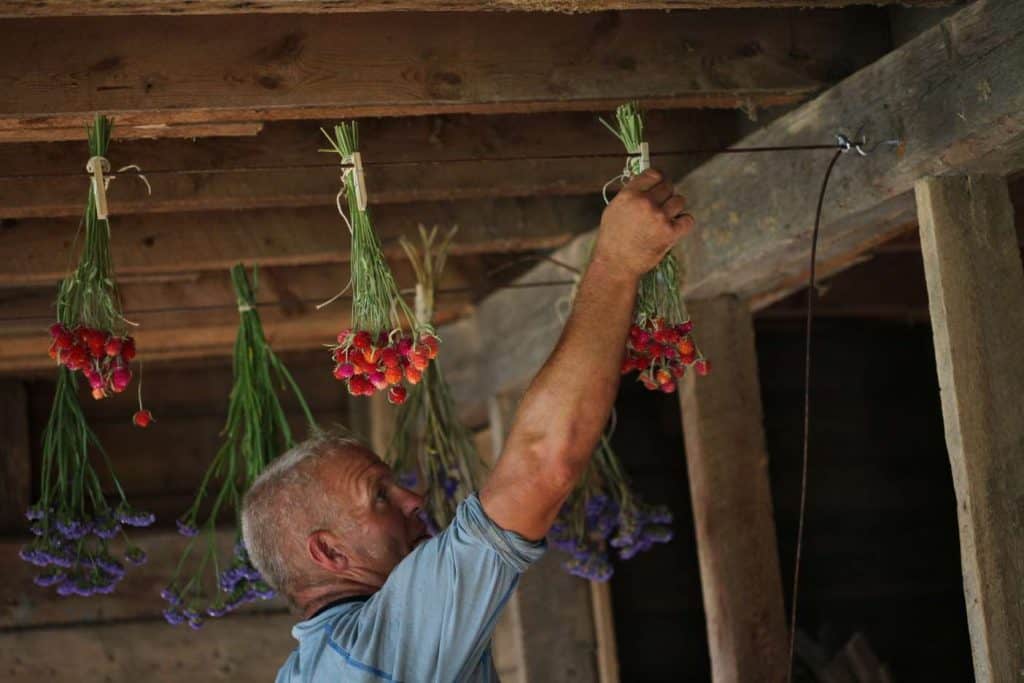
- Attach the bunches of flowers to the drying line by grabbing the elastic with the clothespin, then pinning to the line.
- It's as simple as that.
How Long Should You Hang Flowers Upside Down To Dry?
The flowers should be hung for approximately two weeks, until they are completely dried.
Some may dry earlier, and some may take a little longer.
What Happens If Dried Flowers Get Wet?
If dried flowers get wet they are at risk for moulding.
That is the reason for maintaining warmth and good air circulation during the drying process.
If for some reason they become wet with humidity, try drying with a fan, or putting in a drier location.
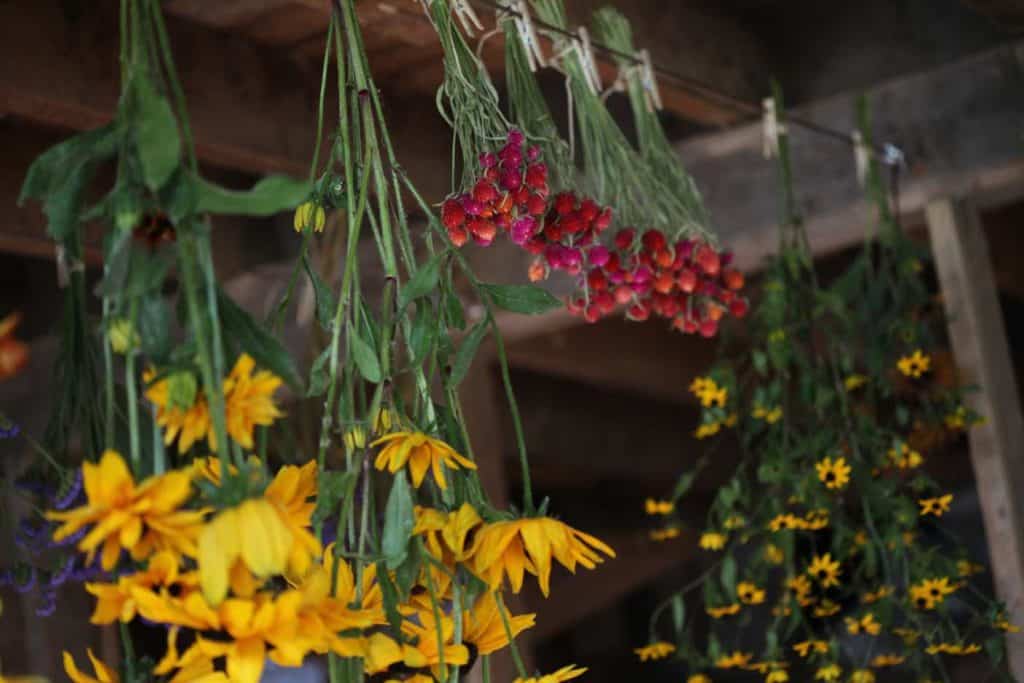
Can You Dry Flowers Right Side Up?
You can absolutely preserve and dry your flowers by drying right side up.
In fact this is the best way to dry some types of flowers, such as those that trail, or those with larger heavy blooms.
It is a bit of a lazier way to dry flowers, and that's right up my alley!
Long trailing flower clusters like Love lies bleeding- Amaranth caudatus, will dry best if placed with stems upright on a frame, allowing the trailing blooms to dry as they droop down naturally.
These blooms can be dried upside down as well, however will be more manageable and look more visually appealing in their dried form when allowed to dry as they naturally grow.
Do You Have To Dry Flowers Upside Down?
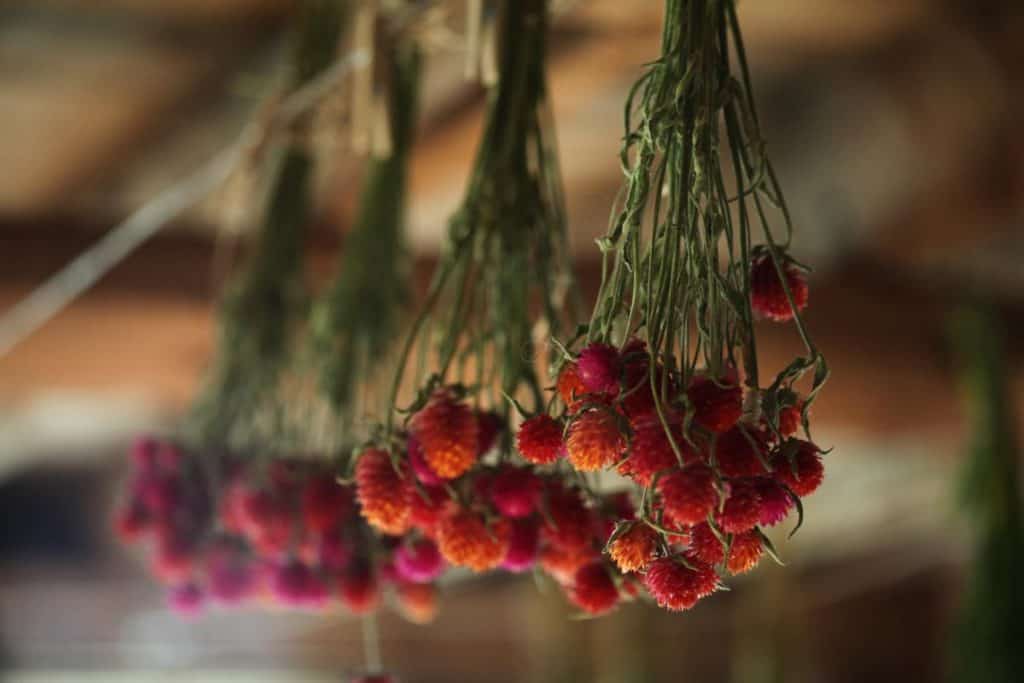
There are many ways to dry flowers. Drying flowers upside down is just one of the very effective and easy ways to dry them.
Flowers can also be dried by:
- drying in a dehydrator or an oven on low temperature
- drying in a vase
- and using a microwave
We will be discussing each of these techniques later in more detail.
Drying flowers can be so much fun, and is a creative and artistic way to preserve your spring and summer blooms.
Long after the harvest is over you can enjoy the beauty and magic of creating with your dried flowers.

HOW TO CARD: Dryng Flowers Upside Down
Drying flowers is a wonderful way to preserve your blooms throughout the growing season. Hanging to air dry is one way to turn these blooms into everlastings. Learn how to dry flowers upside down, to enjoy beautiful dried flowers throughout the year.
Materials
- flowers for drying
- elastic bands
- clothes pins
- wire or cable for the line
Tools
- two cable clamps
- two screw hooks
- one turnbuckle
- wrench to tighten cable clamps
- drill to make holes for screw hooks
Instructions
- Screw in the two screw hooks on opposite walls, at the height of the line you intend to suspend. Use a drill to make the holes if needed.
- Next, fold one end of your line making a loop, and slide on a cable clamp. Tighten the clamp securely on the line.
- At the other end of the line do the same thing, but first slip the line through the turnbuckle before attaching the cable clamp to the line. This turnbuckle allows you to adjust the tension of the line, allowing to tighten as necessary.
- Hook one looped end of the drying line to a screw hook on the wall, and then do the same to the other side of the room. Tighten the line with the turnbuckle to make taught to support your hanging flowers.
- Attach the bunches of flowers to the drying line by grabbing the elastic with the clothespin, then pinning to the line. It's as simple as that.
Notes
If drying in smaller amounts, you can hang suspended from a frame. We used a large wire rack inverted and suspended on which to tie smaller amounts of bouquets for drying.
Have you ever hung flowers to dry? Be sure to leave a comment below to share your experience!
OTHER POSTS YOU MAY LIKE:
See the Web Story on Drying Flowers Upside Down!
PIN IT FOR LATER!
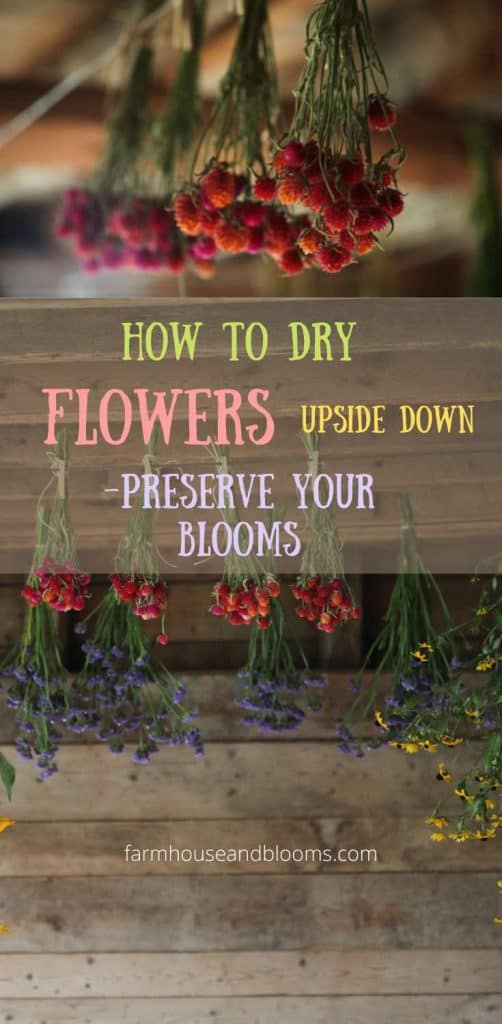
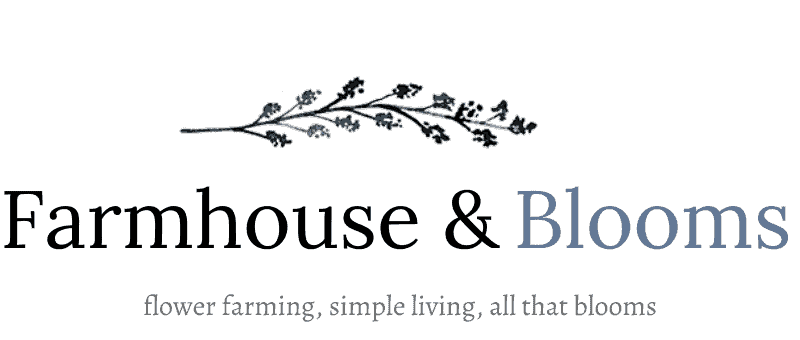

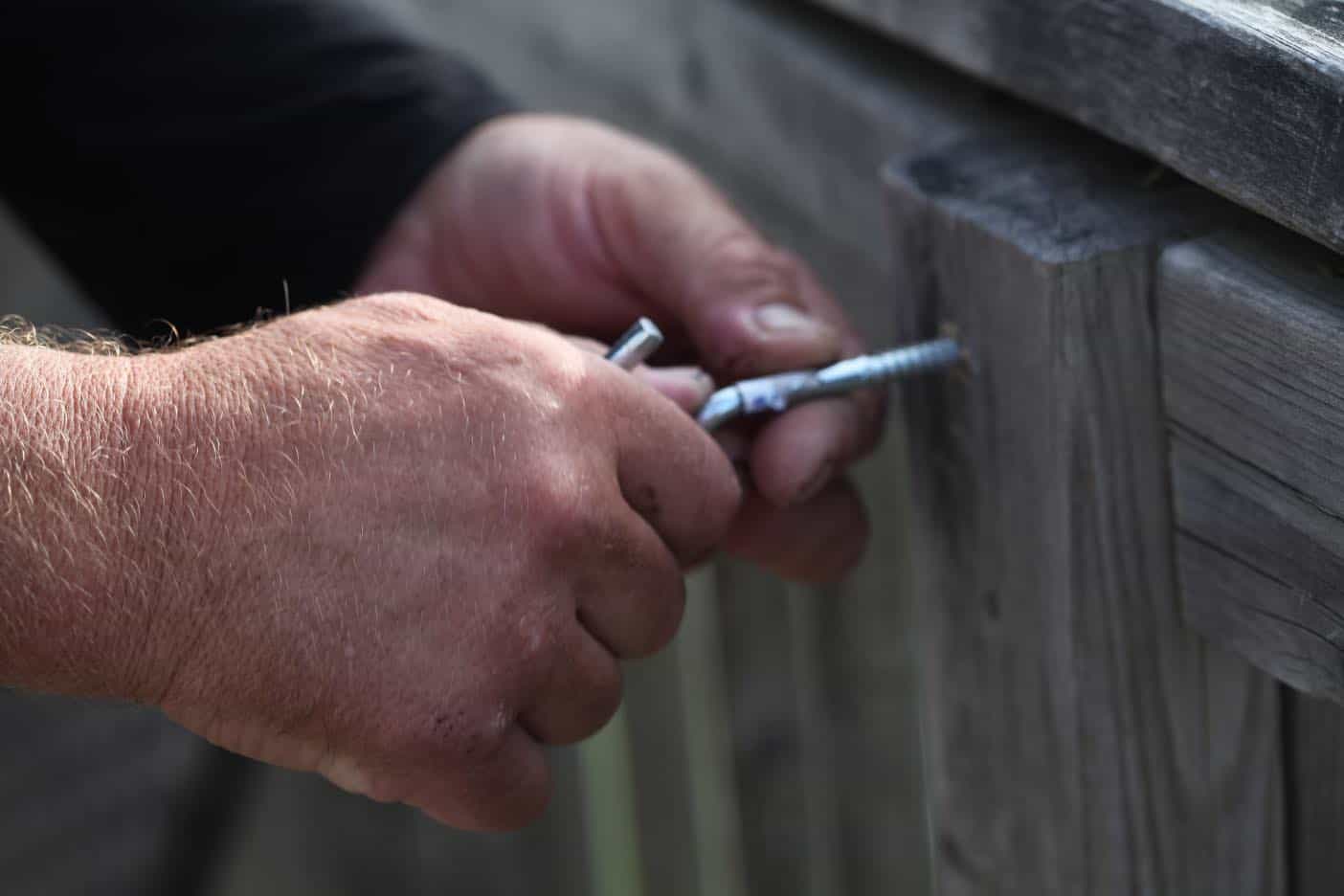
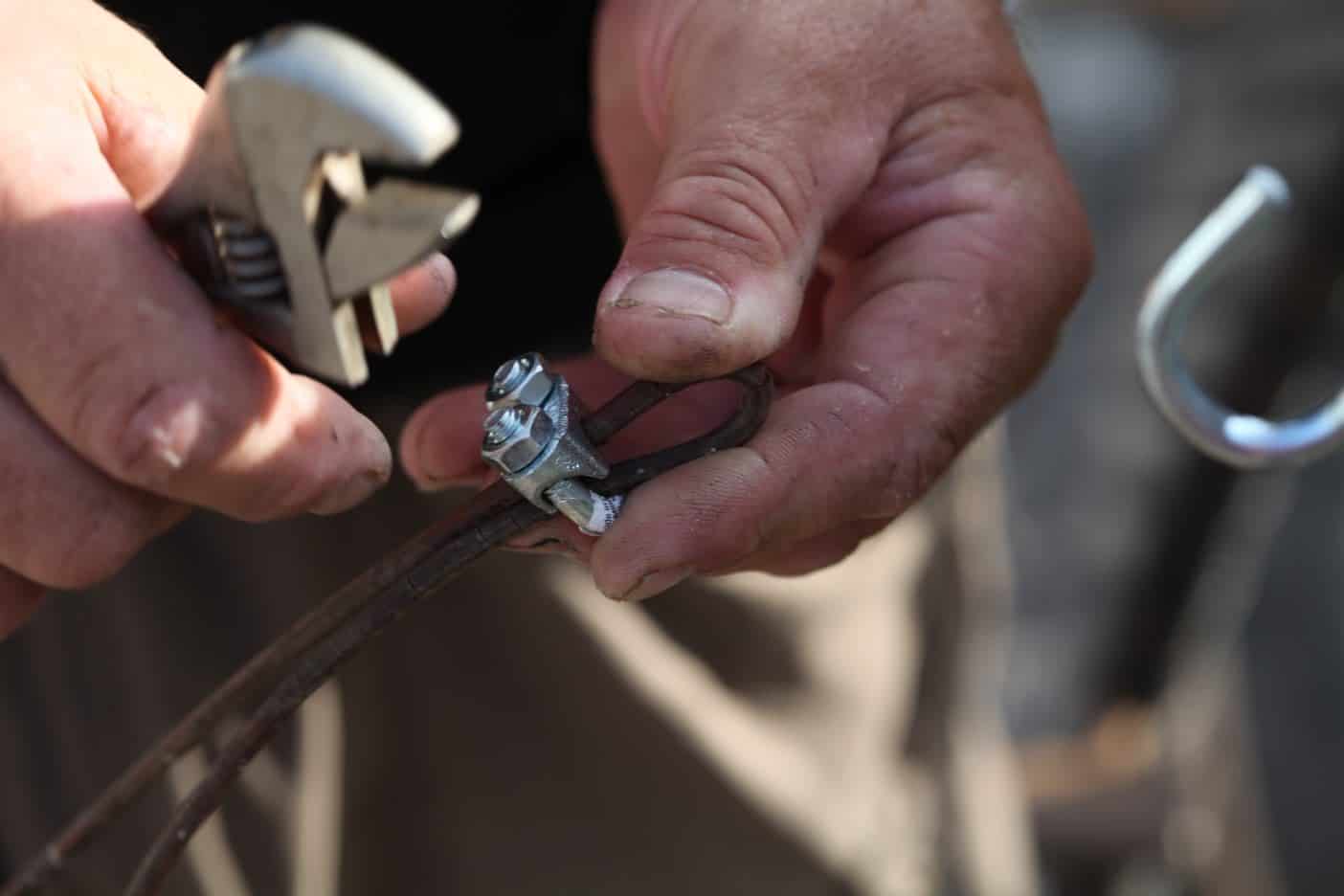
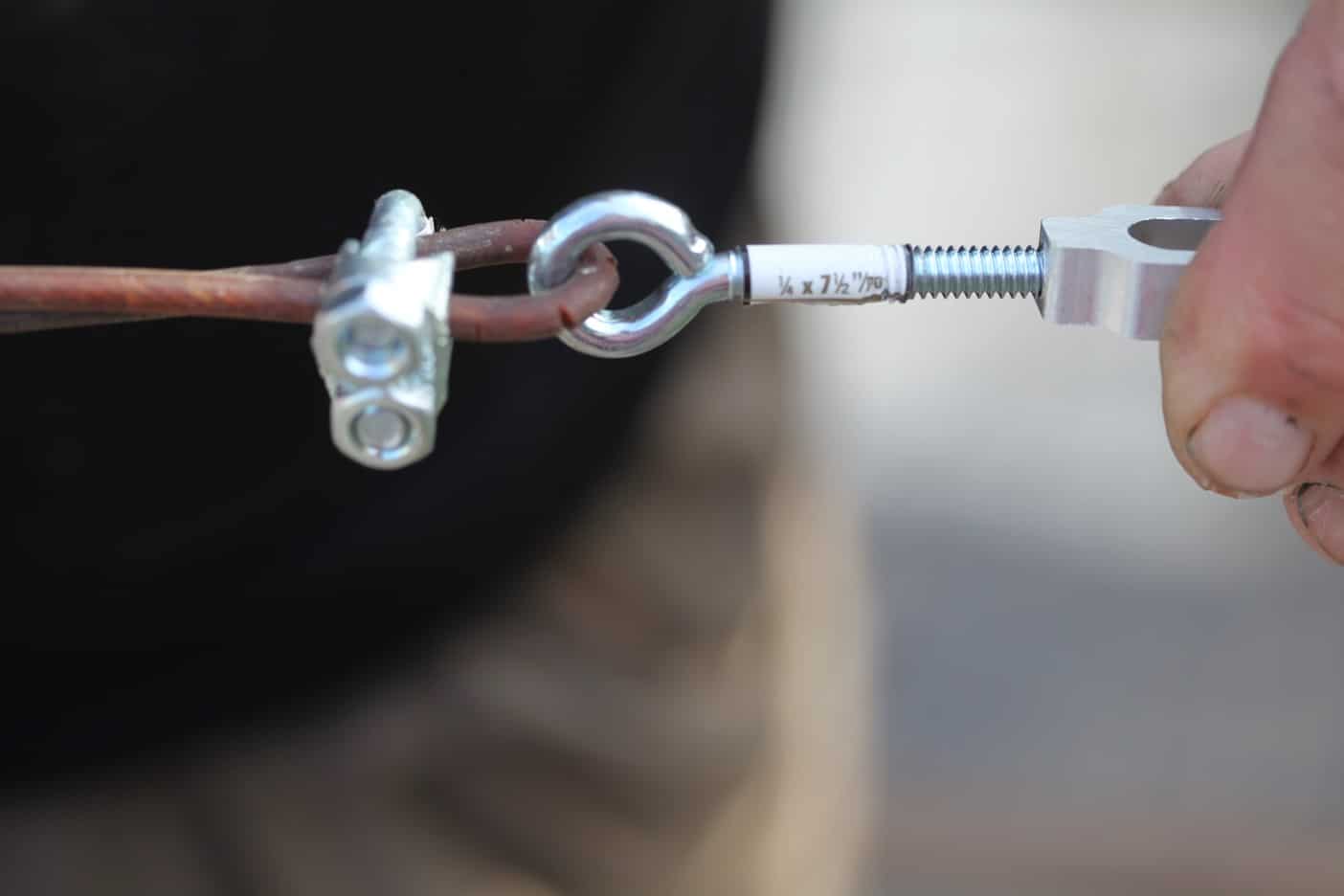
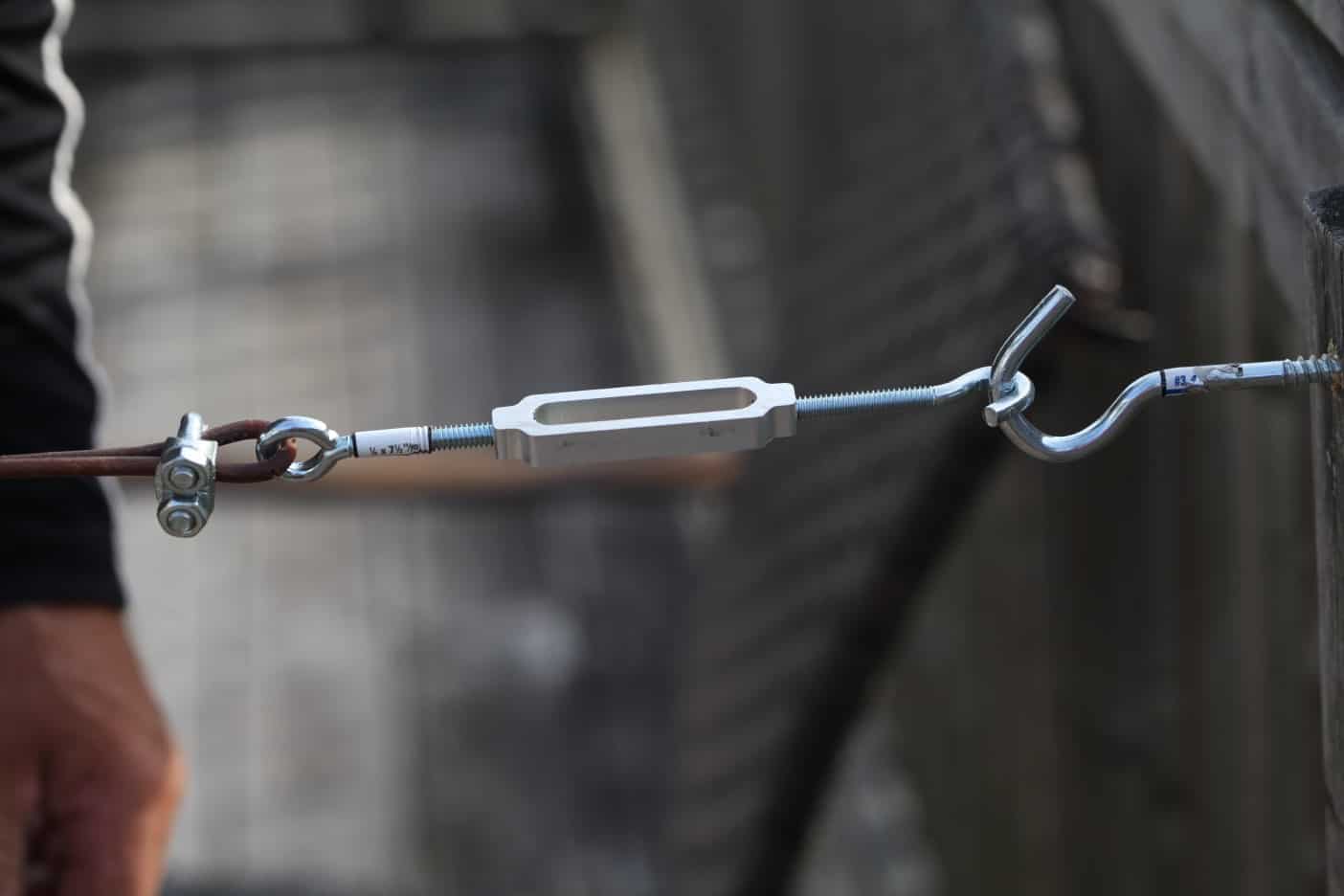
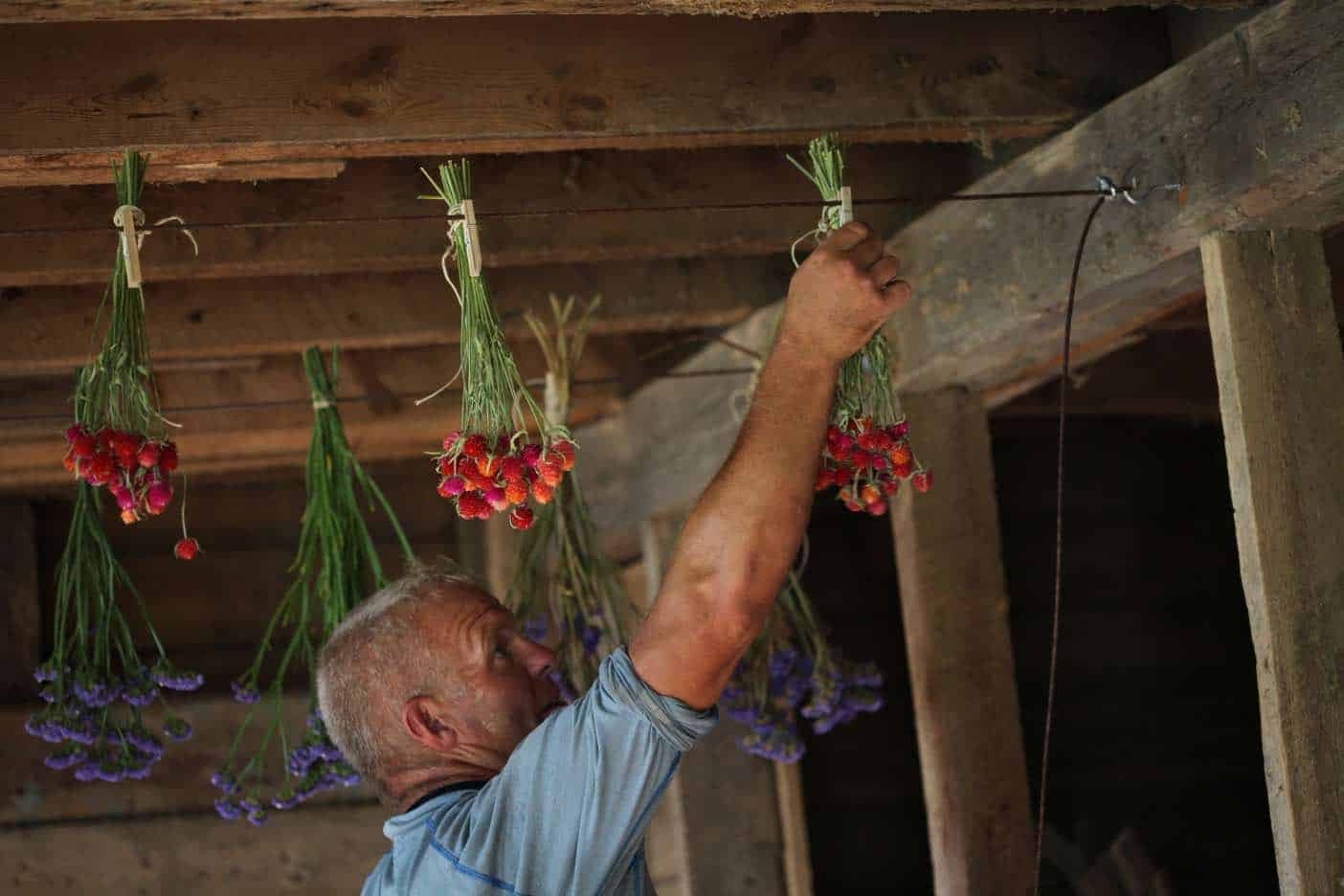
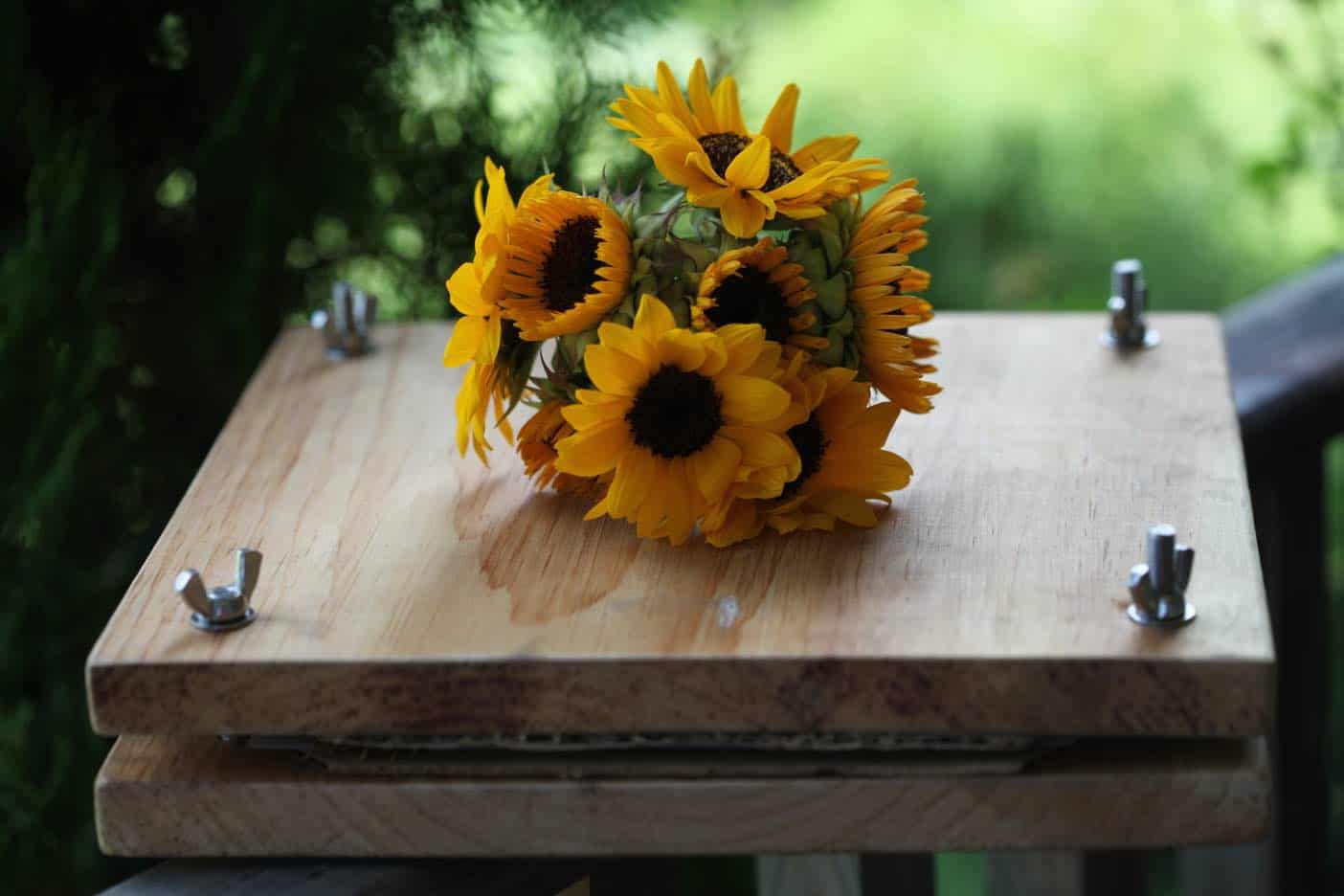
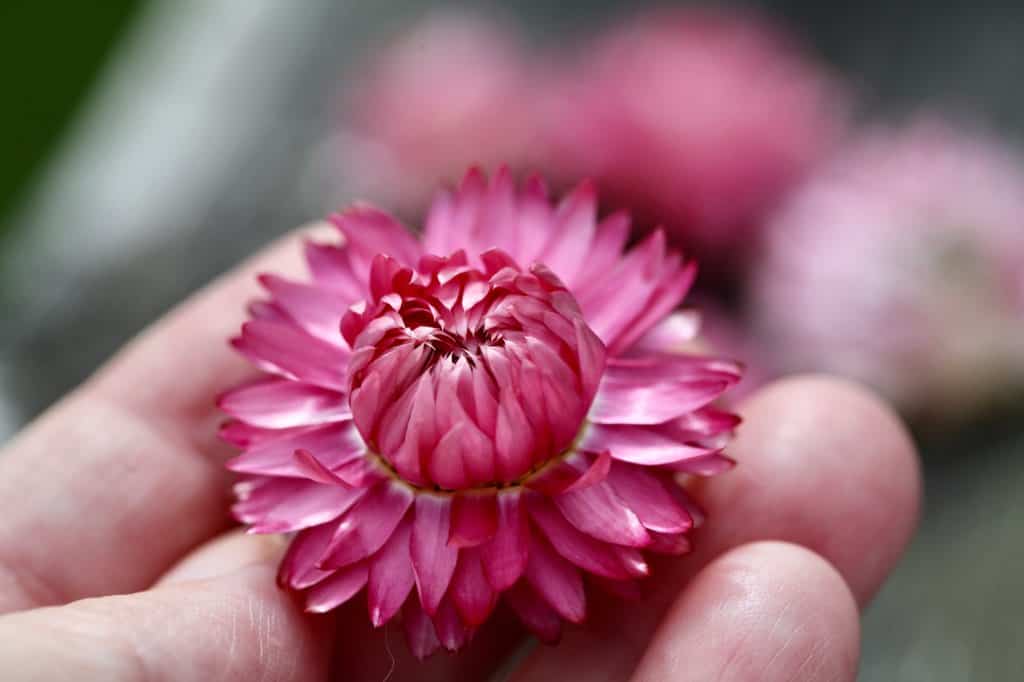
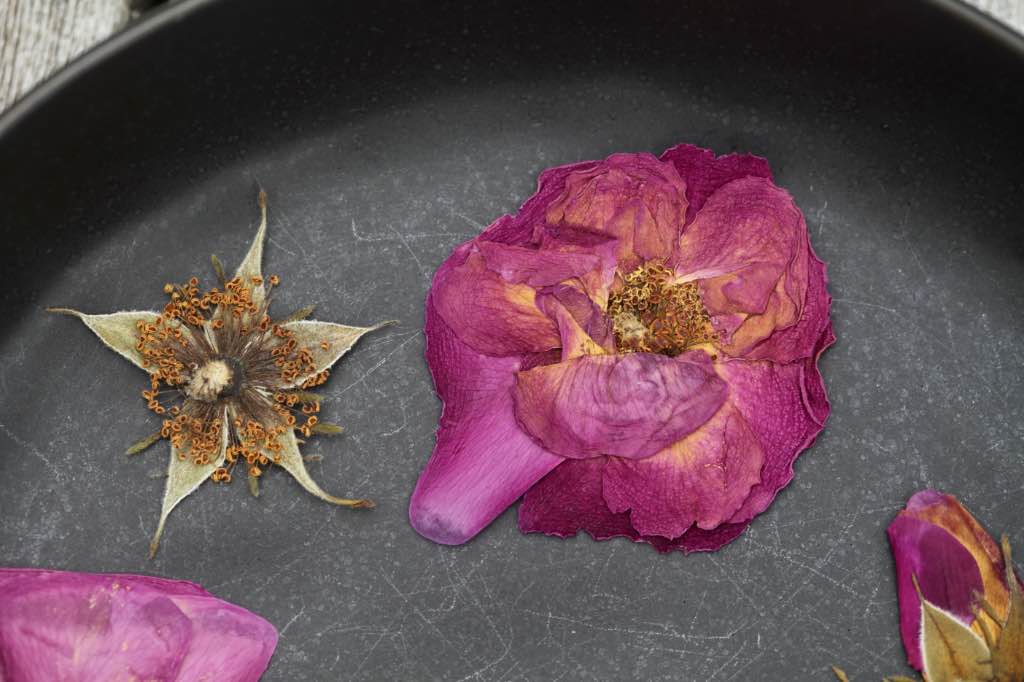
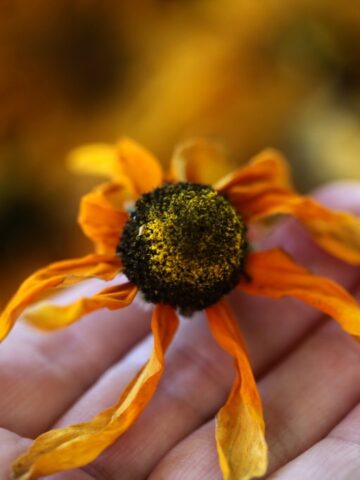

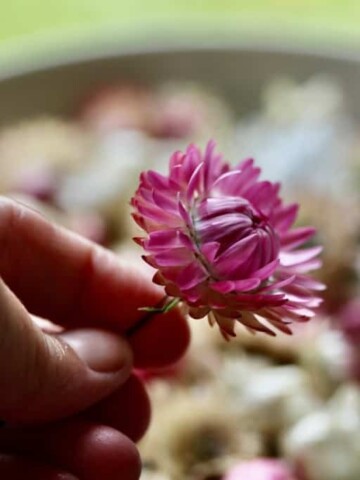
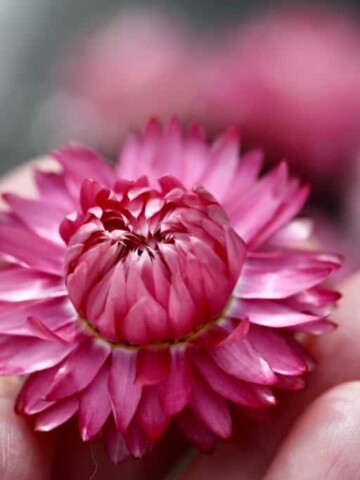
Leave a Reply